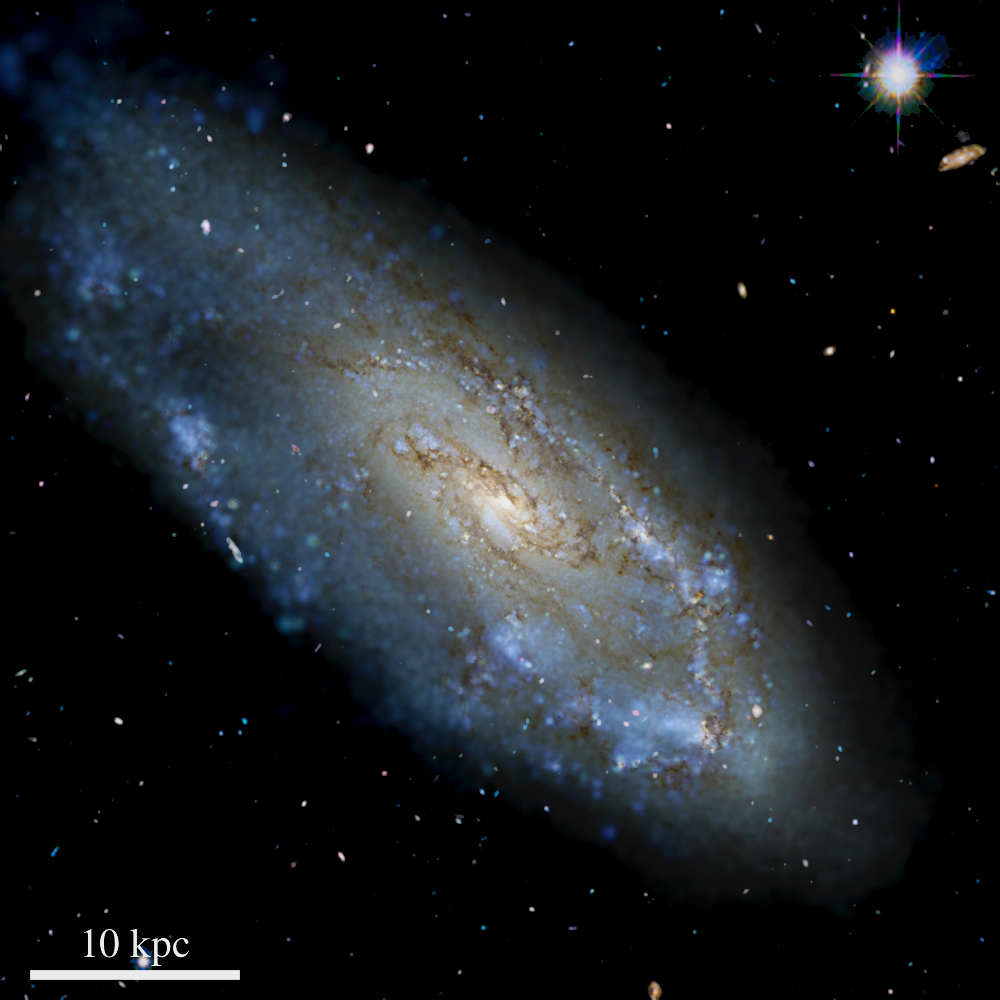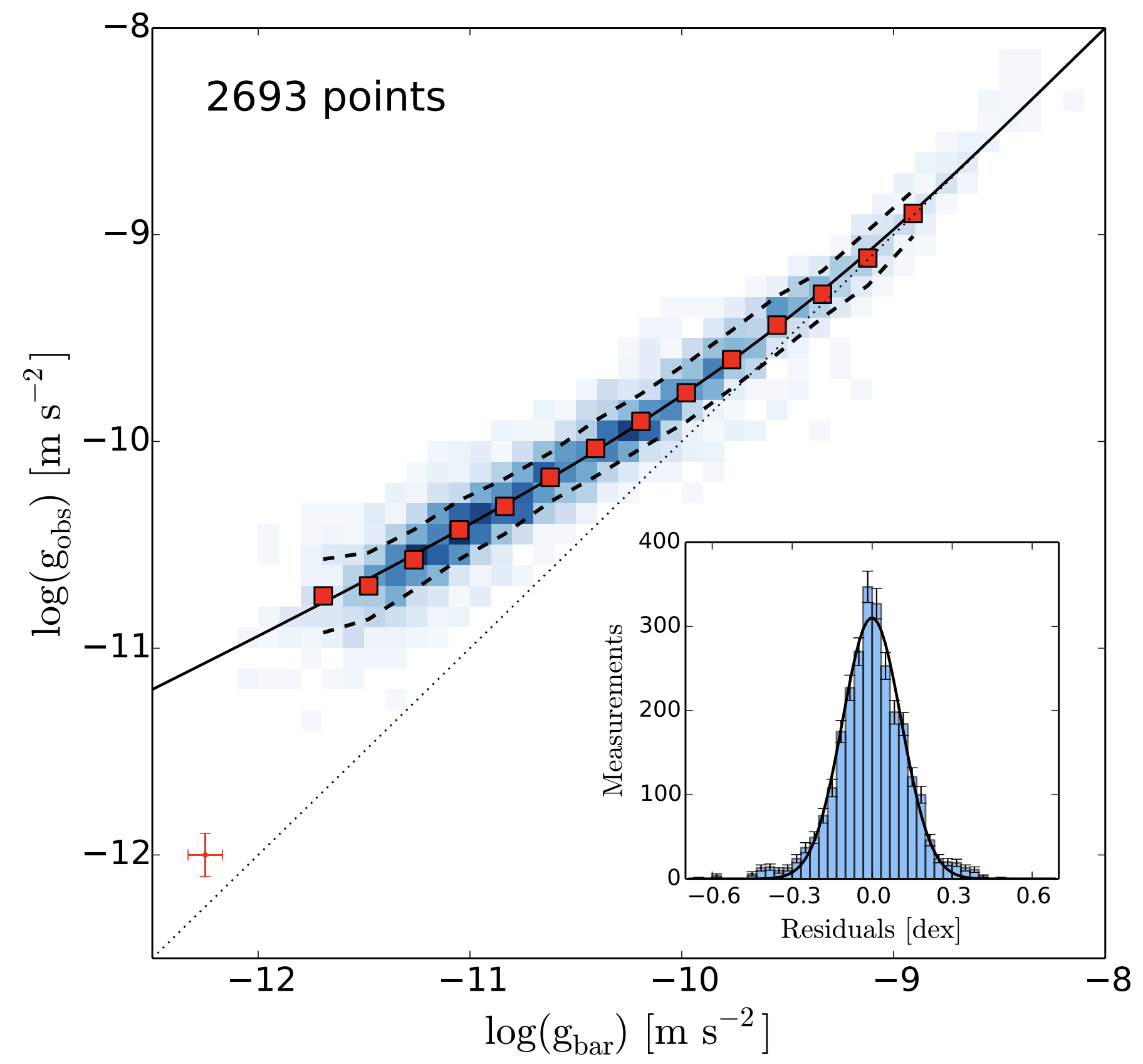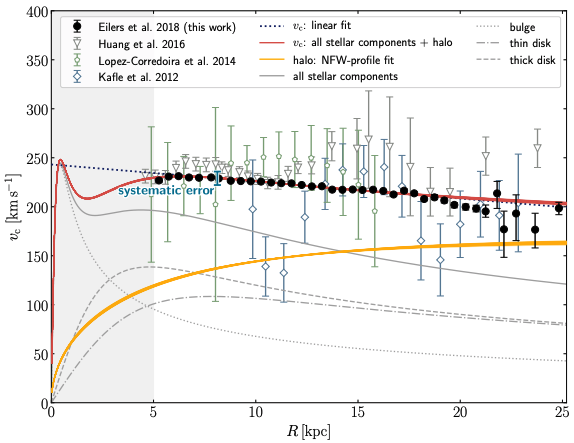RESEARCH
Research Interests
Galaxy formation and evolution, kinematics and dynamics, fundamental parameters, chemical evolution, abundances, cosmological simulations

Recent Work
Effects of galactic environment on size and dark matter content in low-mass galaxies
Galaxies are not isolated systems; they evolve within complex and dynamic environments shaped by interactions with other galaxies, the intergalactic medium, and the underlying large-scale structure of the universe. The relationship between a galaxy’s properties—such as its size, morphology, and dark matter content—and its environment has been a central focus of galaxy evolution research. Understanding these relationships provides critical insights into the processes that govern galaxy formation. In this paper, we use the cosmological volume simulation, FIREbox, to study the effects of environment on galactic size and dark matter content. Using a Random Forest regression model, we find that while galactic environment is significant in predicting a galaxy’s relative size, its halo mass plays a similarly important role. We conclude that a galaxy’s relative size is set by a combination of effects from its environment and halo mass.
Check out the paper here!

Hooks and Bends in The Radial Acceleration Relation (RAR): Discriminatory Tests for Dark Matter MOND

In 2016 a strong empirical relation was discovered between the acceleration at a given point in a galaxy, inferred from its rotation curve, and the acceleration it should have due to only its baryons (stars and gas). The fact that these two quantities are calculated independently of each other has prompted many to point to this as evidence of a need for a modified gravitational law in place of a cosmological model that includes dark matter. We use cosmological zoom simulations run with the FIRE-2 feedback implementation to show that the RAR is a natural consequence of λCDM. Not only do we show that the simulated RAR matches the observed RAR impressively well but we also show that this is expected in the context of λCDM. Furthermore we point to features in the individual tracks of galaxies on the RAR that deviate from the average relation predicted by modified inertia theories of MOND in a way that can be explained in a universe with dark matter but would be difficult to explain with MOND. These “hooks and bends” can serve the basis for a powerful discriminatory test between these two competing models.
Check out the paper here!
Young stars as rotation curve tracers in the Milky Way
Velocity rotation curves of galaxies are used to infer the galaxy’s mass. In the past, many different tracers have been used to estimate the true rotation curve of the Milky Way with varying degrees of certainty. With the release of data from the Global Astrometric Interferometer for Astrophysics (GAIA), we now have access to 6D positions and velocities of millions of stars within the Milky Way. Using simulations of galaxies similar to the Milky Way we show that young stars can be used to track the true rotation curve of the galaxy out to relatively large galactocentric radii.
Coming to an ArXiv near you!

HI Gas in Local Group Galaxies

Galaxy Formation literature suggests that reionization can drastically alter how galaxies (specifically low mass galaxies) form. One way to help us quantify the impact of reionization is to determine how many low mass galaxies with detectable HI content we should see in the Local Group.
I was recently advising two undergraduate students in this research project. Eve Chicas (CSU Fullerton) and Imani Ware (SF State University) used FIRE simulated Local Group Volumes to determine how many of these galaxies we should be able to actually observe in the Local Group.
Stay tuned for results!
The Dwarf Galaxy Stellar Metallicity Gradient Strength-Galaxy Age Relationship
We use a sample of FIRE simulated dwarf galaxies to predict a relationship between the median stellar age of a galaxy and the strength of its stellar metallicity gradient. We also use published data to show that a similar trend exists among real galaxies. We demonstrate that within our simulated sample, a galaxy’s stellar metallicity gradient is formed by a competition between feedback processes that drive older, more metal poor stars outward and the accretion of fresh gas that tends to flatten out gradients. This provides an opportunity to use the resulting slope of the metallicity-strength-galaxy-age relationship to test star formation models within our simulations.
Check out the paper for more details!
